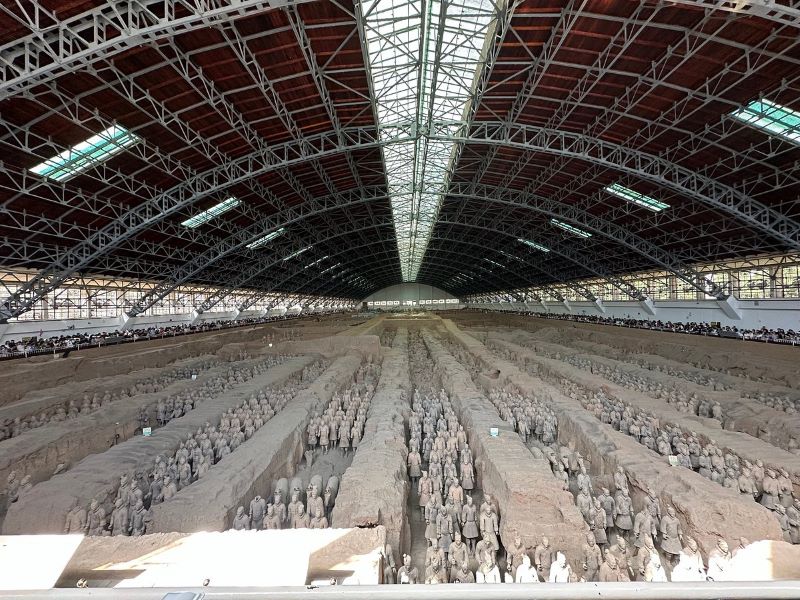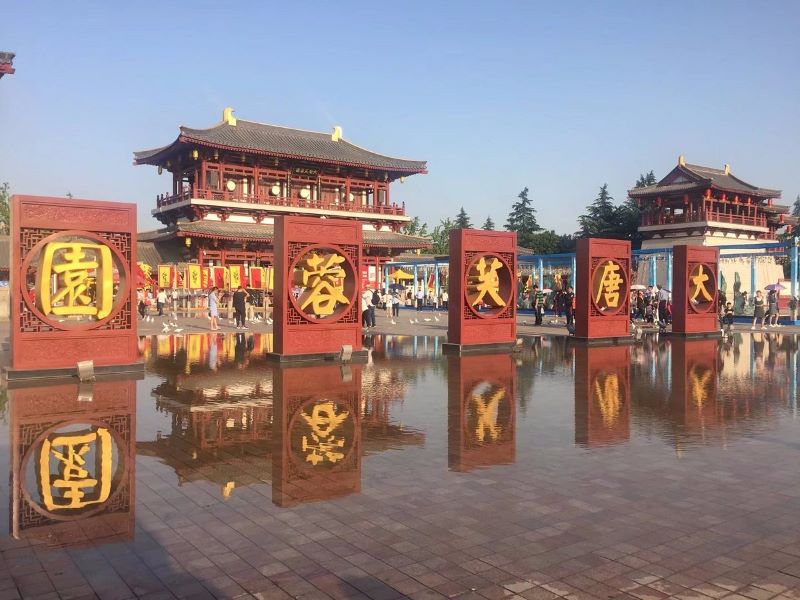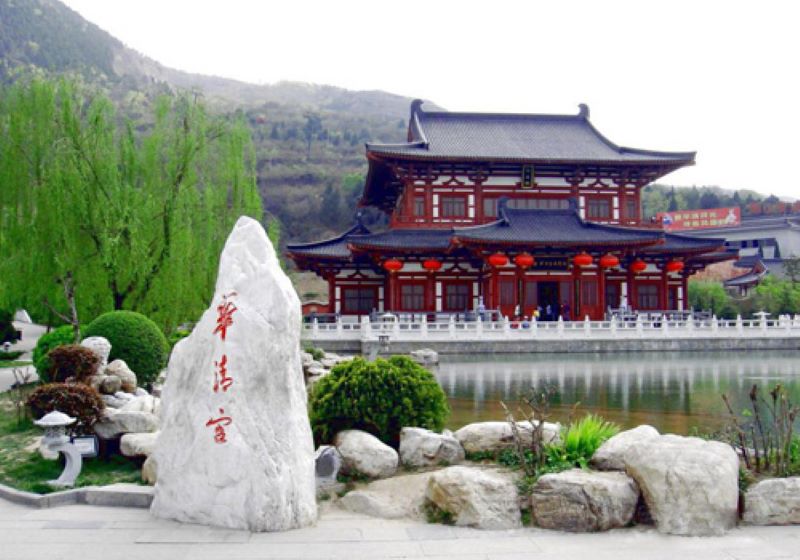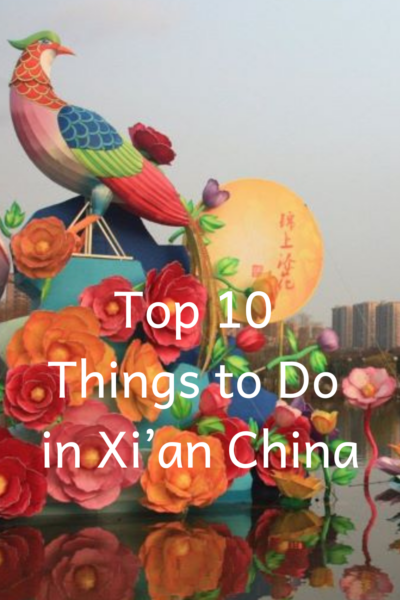
Xi’an, one of the oldest cities in China, served as the nation’s capital for several dynasties. It is renowned for its rich history, vibrant culture, and numerous historical sites. As the starting point of the Silk Road and home to the famous Terracotta Army, Xi’an offers a unique blend of ancient and modern attractions. Here are the top 10 things to do in Xi’an, providing a comprehensive guide to explore this fascinating city.
1. Visit the Terracotta Army
No trip to Xi’an is complete without visiting the Terracotta Army. Discovered in 1974 by local farmers, this archaeological wonder consists of thousands of life-sized soldiers, horses, and chariots buried to protect Emperor Qin Shi Huang in the afterlife. Each figure is uniquely detailed, showcasing the remarkable craftsmanship of the ancient Chinese. The museum complex includes three main pits and a variety of exhibits, offering a captivating glimpse into China’s past.

2. Explore the Ancient City Wall
Xi’an’s Ancient City Wall, one of the most well-preserved city walls in China, encircles the city center. Built during the Ming Dynasty, this massive structure stretches over 13 kilometers and stands 12 meters high. Visitors can walk or cycle along the top of the wall, providing a unique perspective of the city and its historical layout. The wall is particularly enchanting at night when it’s illuminated, creating a picturesque scene.
3. Stroll Through the Muslim Quarter
The Muslim Quarter, a vibrant and bustling area, is a must-visit for its rich cultural heritage and delicious street food. The narrow streets are lined with shops, food stalls, and restaurants offering a variety of local delicacies such as lamb kebabs, roujiamo (Chinese hamburger), and biangbiang noodles. The Great Mosque, one of the oldest and largest mosques in China, is also located here, blending traditional Chinese and Islamic architectural styles.
4. Discover the Big Wild Goose Pagoda
The Big Wild Goose Pagoda, a UNESCO World Heritage site, is an iconic symbol of Xi’an. Originally built in 652 AD during the Tang Dynasty, this ancient Buddhist pagoda was constructed to house sacred scriptures brought from India by the monk Xuanzang. The seven-story structure offers panoramic views of the city from the top. The surrounding Da Ci’en Temple complex and the nearby musical fountain show add to the appeal of this historic site.
5. Visit the Shaanxi History Museum
The Shaanxi History Museum is one of China’s best museums, showcasing the region’s rich history and cultural heritage. The museum’s extensive collection includes artifacts from the Zhou, Qin, Han, and Tang dynasties, featuring pottery, bronze items, and murals. The exhibits provide a comprehensive overview of the area’s history, making it an essential stop for history enthusiasts.
6. Experience the Tang Paradise
Tang Paradise, a cultural theme park, recreates the grandeur of the Tang Dynasty. Covering an area of 165 acres, the park features classical architecture, beautiful gardens, and cultural performances. Visitors can enjoy traditional music and dance shows, water displays, and even a re-creation of the Tang royal court. The park is especially magical at night when it’s illuminated with colorful lights.

7. Marvel at the Small Wild Goose Pagoda
The Small Wild Goose Pagoda, another significant Buddhist site, is located in the Jianfu Temple complex. Built during the Tang Dynasty, this 15-story pagoda is slightly smaller and less crowded than its larger counterpart, the Big Wild Goose Pagoda. The surrounding gardens and the nearby Xi’an Museum, which houses various relics and artifacts, make it a peaceful and informative destination.
8. Explore Huaqing Palace
Huaqing Palace, located at the foot of Mount Li, is famous for its natural hot springs and historical significance. The palace served as a winter retreat for Chinese emperors and is associated with the romantic legend of Emperor Xuanzong and his consort Yang Guifei. Visitors can explore the beautifully landscaped gardens, ancient bathing pools, and historical exhibits. The palace also offers stunning views of the surrounding mountains.

9. Hike Mount Hua
For adventure seekers, a hike up Mount Hua (Huashan) is a must. Known for its steep and narrow paths, this mountain is one of China’s Five Great Mountains and offers breathtaking scenery. The challenging trails lead to several peaks, each providing spectacular views. The most famous route, the Plank Walk, consists of wooden planks attached to the side of a cliff, offering an exhilarating experience for those daring enough to try it.
10. Visit the Bell and Drum Towers
The Bell Tower and Drum Tower are two of Xi’an’s most iconic landmarks. Located at the heart of the city, these structures date back to the Ming Dynasty. The Bell Tower, standing on a raised platform, offers panoramic views of the city and features a large bronze bell that was used to mark the hours. The nearby Drum Tower houses a collection of ancient drums and hosts regular drum performances. Both towers are beautifully illuminated at night, adding to their charm.
Conclusion
Xi’an is a city where history and modernity coexist, offering visitors a chance to explore China’s ancient past while enjoying contemporary amenities. From the awe-inspiring Terracotta Army to the vibrant Muslim Quarter, each attraction provides a unique insight into the city’s rich cultural heritage. Whether you’re a history buff, a foodie, or an adventure seeker, Xi’an has something for everyone. Plan your visit to this captivating city and experience the best of what it has to offer.
Practical Tips for Visiting Xi’an
- Best Time to Visit: The best times to visit Xi’an are during the spring (March to May) and autumn (September to November) when the weather is pleasant.
- Transportation: Xi’an has an efficient public transportation system, including buses and a metro network. Taxis and ride-hailing services are also readily available.
- Accommodation: From luxury hotels to budget hostels, Xi’an offers a wide range of accommodation options. Staying in the city center provides easy access to major attractions.
- Local Cuisine: Don’t miss trying Xi’an’s famous local dishes, such as biangbiang noodles, roujiamo, and lamb kebabs. The Muslim Quarter is a great place to sample a variety of street foods.
- Language: While Mandarin is the primary language spoken, many tourist areas have signs and information in English. Learning a few basic Mandarin phrases can be helpful.
- Cultural Etiquette: Respect local customs and traditions, especially when visiting religious sites. Dress modestly and be mindful of your behavior.
- Travel visa: You can obtain a Chinese visa at the Chinese embassy or consulate in your country or use a visa service company.
Final Thoughts
Xi’an’s historical significance and cultural richness make it a must-visit destination for anyone interested in China’s heritage. By exploring its ancient sites, enjoying its culinary delights, and immersing yourself in its vibrant culture, you’ll gain a deeper appreciation for this remarkable city. Whether you’re planning a short trip or an extended stay, Xi’an promises an unforgettable experience that will leave you with lasting memories.











 Instagram Feed
Instagram Feed
Lots of exciting things to see and do in the Xian area, Patti! I remember first seeing the Terracotta Warriors on an episode of The Amazing Race over a dozen years ago and that was why we visited the city back in 2013. We were just in Chengdu for close to a week and I wish we could have visited the Shanxi Museum you mentioned which wasn’t too far away but we ran out of steam! It’s supposed to be even better than the terracotta warriors. What did you think of it?
Annie E Berger recently posted…5/6/24 Continued: Onto Mt. Fuji & A Master Dye Artist!
Thank you for sharing, Annie. I imagine the warriors were spectacular. I’m sorry to say we have not yet traveled to China. So many places so little time. This post is actually a guest post. Best regards and safe travels!